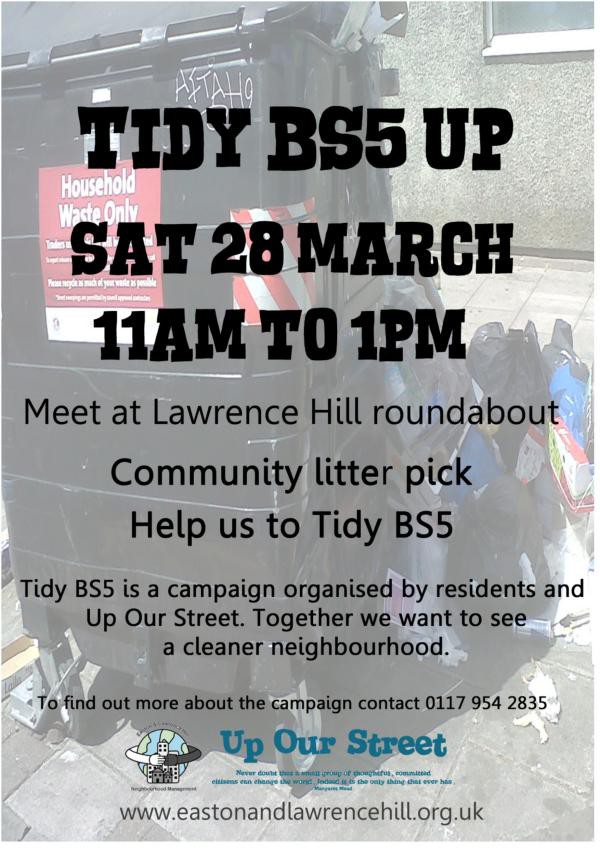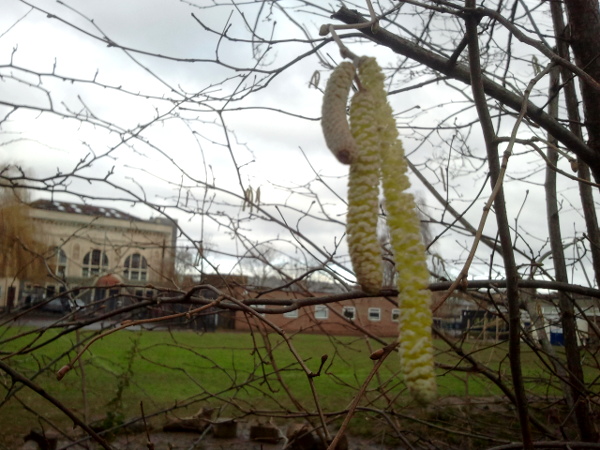The review is reproduced below by kind permission of the author.
I recently watched ‘Old Kent Road’, a new documentary film written and directed by Ian Parkin. The screening took place in Deptford Cinema, a new not-for-profit space which has recently opened on Deptford Broadway.
The synopsis of the film states the director’s intentions: ‘(to) explore the rich history, examine its pluralist architecture and take stock of what the road is now.’ I was expecting the film to provide a historical background to the area, interlaced with local interviews and touching on the threat from property developers who have the road in their sights. Instead I was shocked by the bloody-minded ignorance of a film that bombards its audience with the director’s bigoted nostalgia.
The film starts with a summary of the road’s history, from its Roman origins and Saxon name of Watling Street, via Chaucer to Victorian Britain and the present day. This is the end of the historical background, and shortly afterwards the mood changes abruptly. Due perhaps to his hurried rendition of the road’s history, in which there is no gap between the Victorian era and our own, Parkin laments the transformation of the Georgian terraces and gardens into ‘gaudy’ shopfronts as if this was something that happened overnight. His ensuing statement about the road’s increasing poverty and deprivation seem to come from the same misinformed viewpoint.
Parkin goes on to complain about the lack of pubs and bars on the road (even though quite a few are shown in passing). He interviews three men about their recollections of the drinking culture in the area during the 1980s. What proceeds is a lengthy and jumbled summary of their nights out. Why the narrator spent so long interviewing them, despite their derogatory remarks about women and their dubious idea of ‘a good night’ (‘you start a fight, you get nicked, you pull a fat bird’) is unclear. The discussion was completely unedited, allowing the men to ramble on at leisure and completely killing any momentum that could have been building in the narrative.
Strangely, the interview stands out for being one of the few times in the film where the narrator himself paused for breath. Footage was rarely allowed to speak to itself, with no relationship between sound and image except that which we were force-fed by the commentary. There were times when this was morally questionable. Snooping on ‘migrants’ meeting in a Tesco car park, while making assumptions about them and their lives, or lamenting the poverty of the area while showing close crops of people’s houses and shopfronts is, frankly, criminal. Filmmakers have an ethical responsibility to the people and places they are depicting, and this film felt at times like a one man diatribe.
An example of this is when Parkin takes issue with the number of churches along the Old Kent Road. Instead of interviewing any churchgoers or members of the clergy, he prefers to film from a distance, while making a private mockery of each organisation. Churches are scorned for their ‘humorous taglines’ and supposedly inappropriate locations. One is criticised for using a building on an industrial estate, another for being ‘next to a Plumbase shop’. Some are blamed for taking buildings away from supposedly ‘better’ uses, for example the Iglesia la Luz del Mundo (Church of the Light of the World) which is lambasted for having the temerity to occupy the former home of Regency architect Michael Searle. Even more bizarrely, another church is castigated for using the former Wells Furniture Emporium building. Parkin remarks on the seemingly astonishing coincidence that this building bears resembles to a traditional church. But, he says, as the building was not built as a church, ‘the light that shines in this building is despite the use, not because of it…it is a secular light’.
This is a fundamental misunderstanding of the nature of space, and one of the main problems with the film in general. Buildings and spaces do not have inherent qualities that are present from their birth. These come with a building’s social use, the patterns and activities of the people and groups who use them. Searle’s house is no good to the public as an empty relic, and the bakelite brilliance of the Wells building seems perfectly suited to its new use. Similarly, empty buildings do not magically retain their former qualities. Later in the film, Parkin looks to two empty buildings on the road, which have had mock signs installed to make them look like shop fronts. He praises the fact that these buildings are empty, and says we should admire them, because ‘at least they haven’t been gentrified yet’. These buildings are not worthy of praise simply because of their age. Parkin seems to want to treat them as relics, with their peeling paint and crumbling brickwork. But this, together with the word ‘gentrified’ is precisely the type of thinking that allows property developers to take over. It implies that gentrification is a homogeneous, inevitable process in which we, as local residents, have absolutely no say. Though the situation appears bleak, the idea that any new use for a building is automatically harmful (what about converting it into social housing, or a new community centre?), and that they are simply waiting to be pounced upon by the likes of Lend Lease or Brookfield, is a complete fallacy. If we stand by and simply admire such buildings in their derelict or dilapidated state, we are simply asking for the developers to snap them up.
These big development companies are barely mentioned, besides a few comments at the end which seem tacked on for good measure, without any critical focus. Existing large developments are equally absent, except the ‘Walkie Scorchie’, everyone’s favourite coffee-table joke, and a brief section about the Shard in which it is described as ‘a lighthouse standing proud’. Parkin does criticise the Shard’s architecture and the lack of a coherent skyline in the City, but the fact that such a monument to oil-baron investment and free market Capitalism can be compared to a guiding beacon is very worrying. What about the tactics of the big property developers that allows them to build such megaliths, and what does it mean for areas like the Old Kent Road? If Parkin had focused his attentions on the motives of such big companies and how they are able to take over an area, the film could have been very different. The Old Kent Road has undergone a great many changes in its recent history, now with large supermarkets and out-of town shopping centres catering more to passing motorists than the surrounding community. But this is due to the skewed policies of successive Governments, who have been sitting comfortably in the back pockets of large corporations since the 1980s. This partnership between politics and big business is where we should lay the blame for the increasing privatisation and homogenisation of our towns and cities, not the people who live in and use them.
After all that is said in the film, its rather weak ending of ‘let’s enjoy the Old Kent Road now as it is, before it changes’ seems totally out of place, not to mention disingenuous. Parkin uses the film to pour his white-middle-class-male scorn over the road and its inhabitants. This narration-heavy style of filmmaking can be dangerous, as it allows people to ram their own prejudices down viewers’ throats, without recourse to self-reflection or a second opinion. Parkin has neglected his ethical responsibility in making this film. He also leads us to believe that the encroachment of transnational property developers is totally inevitable, and therefore above discussion or debate. This is especially dangerous as the film is billed as an ‘alternative’ history of the area, and if left uncriticised it could do a lot of damage.










 There’s been a lot of coverage in the media recently on the falling price of crude oil – and consequently of petroleum products – but it is questionable whether any other coverage has attained the level of religious fervour exhibited by the Bristol Post, an organ not normally renowned for its piety.
There’s been a lot of coverage in the media recently on the falling price of crude oil – and consequently of petroleum products – but it is questionable whether any other coverage has attained the level of religious fervour exhibited by the Bristol Post, an organ not normally renowned for its piety.